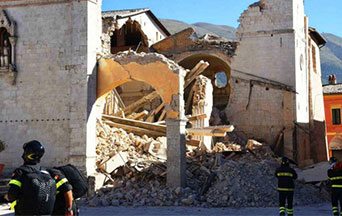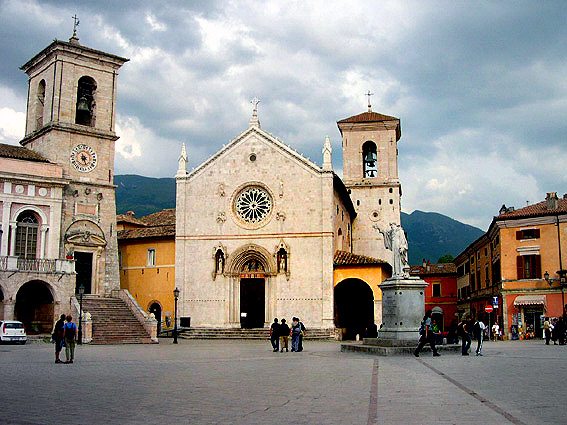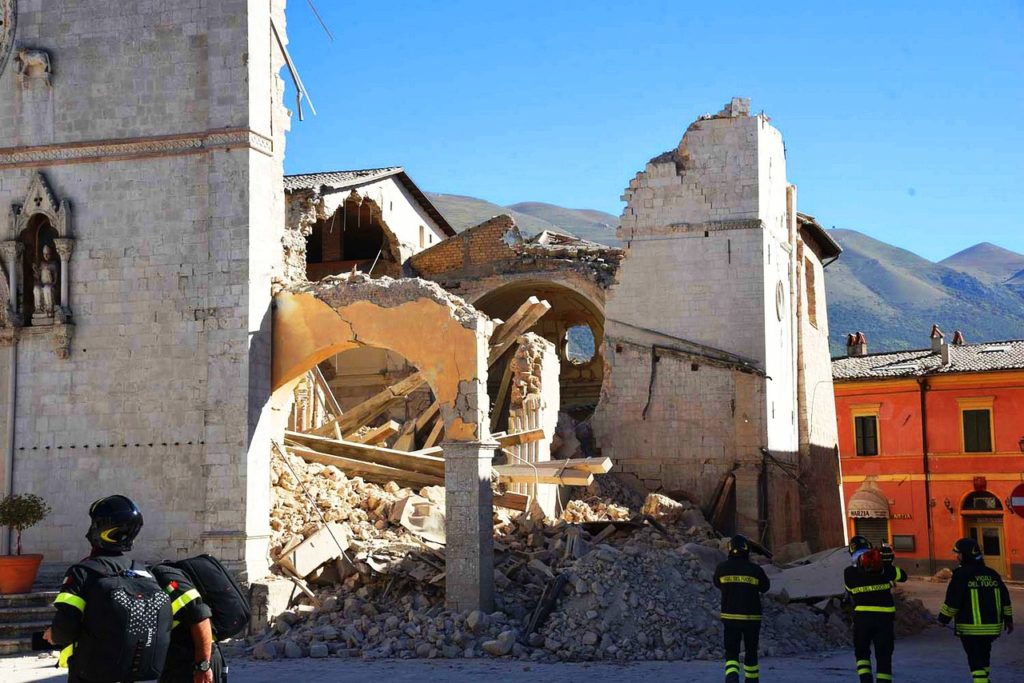 It has been some time since a powerful 6.6 magnitude earthquake struck close to Norcia in Italy. The disaster on October 30 shocked the world as it destroyed the Basilica of St. Benedict that was built over the birthplace of its namesake. It left only the façade standing.
It has been some time since a powerful 6.6 magnitude earthquake struck close to Norcia in Italy. The disaster on October 30 shocked the world as it destroyed the Basilica of St. Benedict that was built over the birthplace of its namesake. It left only the façade standing.
While this frightening quake left many people homeless, fortunately there were no major casualties. Reflecting amid the ruins of this tragedy, there is another aspect that might be considered beyond the physical damage.
It is impossible not to see a certain symbolism in the earthquake. Many of the buildings in the city’s central piazza were damaged but generally left intact. What is significant is that the basilica on the piazza was flattened.
This was not just any basilica but a major shrine that marks the birthplace of Saint Benedict. And Saint Benedict was not just any saint but the founder of Western monasticism. His great literary work, The Rule of Saint Benedict became one of the most significant influences on Christendom and its culture. His greatest achievement, the Benedictine order, became the foundation of Western Christian civilization. Pius XII and many others rightfully call this great saint the “father of Europe.”
It was the civilizing influence of Benedict’s monks of the West that tamed the unruly passions of barbaric tribes and invading peoples who wreaked such havoc on medieval Europe. The spirit of their constant personal self-sacrifice and self-control permeated and set the tone for all society. It was by this spirit that the barbarians were gradually both restrained by force of arms and calmed by prayer and penance under the loving gaze of the Church.
Thus, from this blessed place in Norcia, there sprang this giant saint who gave rise to missionaries who spread the Faith in Europe and around the world. It was the powerhouse of the prayers of his contemplative monks that brought the graces from God to convert so many. They educated Europe with an erudition and unrivalled zeal for truth. It was the sublime beauty of Benedictine liturgical life that turned the worship of the one true God into a magnificent and glorious prefigure of heaven.

Above all, the Benedictine spirit presented a way of life that attracted mankind to live the Gospel. One could say that the Benedictine order was founded to contemplate the continuity between heaven and earth. Their lives mirrored heaven and presented this life and the heavenly one as a magnificent harmonic continuity in which death was a passing incident.
In this sense, the Benedictines were like the ballast of a ship that kept society in general in balance. Their mere presence radiated temperance and civilization. Wherever the bells of their abbeys and monasteries rang, it was a reminder that the monks were presenting honor, worship and petitions before the throne of God.
Such was the Benedictine order that once stood so mightily before God. But now this impressive edifice has come crashing down.
Over the last fifty years, the Benedictine order has become a shadow of what it once was. This is largely due to actions from within the order, not attacks from outside. The ravages of progressive thought have wrought more damage than the barbarian tribes that often sacked monasteries in ages past. Modern liturgical innovations have reduced the splendor of Divine worship to an ugly and bland simplicity. His Rule, the backbone of the Benedictine way of life, is no longer followed in many abbeys. The aging ranks of the monks and sisters have now thinned due to declining vocations.
Alas, the Europe he founded is dying too as its peoples have fewer children. Its way of life has become decadent and promiscuous. The Faith is waning as many no longer go to church. Others who hate the Faith now invade the lands. The masterpiece of Benedict’s monks, Western Christian civilization, is laid waste and forgotten.
Thus, the image of a ruined Saint Benedict’s basilica is tragically symbolic of the times. The disaster happened to the very birthplace of he who was Europe’s founder. The impressive edifice of the Benedictine ideal, long corroded from within, has come crashing down. The order can no longer live off the memories of its past grandeur. Only a façade remains consisting of those few monks still faithful to the Rule.
Decadent societies always live in deliberate denial of such symbolism. While they have no choice but to look upon the material damage, people prefer not to see social realities that are painful to behold.
There is a moral earthquake that has destroyed more than just the Basilica of St. Benedict in Norcia. The sad reality is that the rebuilding of shaken villages will not save dying Europe. What is needed is to call forth new Benedicts to repair the terrible devastation to souls caused by the moral earthquake now shaking the West.



